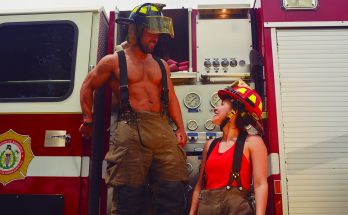By Carlos Betancourt Cid
Usually in Mexican history, Miguel Hidalgo y Costilla is recognized as the main champion of the War of Independence that began in 1810, and which freed Mexico from Spanish rule, eleven years later. There is good reason to honor Hidalgo, but we must recognize that he did not undertake the fight alone. Aside from the multitudes that joined him in the battle for liberty, there were also other important Criollo leaders whose impact must be recognized. Foremost among them, was the man who was baptized with the names of Ignacio José de Jesús Pedro Regalado, but is known simply as Ignacio Allende in the annals of history. He was born on January 21, 1769 in the town of San Miguel el Grande, in the Bajio region of what was then New Spain.
Ignacio Allende was a member of one of the most distinguished families in town. In his youth he became known as the most brave and daring, in his military or civilian actions. These qualities made him famous and well-liked among his contemporaries. With these qualities, and his role in the War of Independence, he gained such recognition that many dedicated narratives about him which remain part of history to this day. He was called «the first soldier of the nation,» «initiator of the Independence of Mexico,” as well as “the forgotten hero.” Some of the tales about his war efforts, for which he gave his life, are featured here.
Little has been told about his youth, and even the details related to his elementary education are vague. But we can assume that his early education was decent because some of the documents preserved from those years show his penmanship to be done in a neat and clear style, and a display of knowledge. He was most certainly a student at the Colegio de San Francisco de Sales, in San Miguel. But, unlike his brothers, he did not go to Mexico City to continue his training. What was evident from Allende’s youth, was that he was not destined to spend his life in religious contemplation, or in books. He was to grow up to be a man of action.
There are many anecdotes about Allende that seem to reinforce his physicality, and the fact that he did not allow fear to intimidate him. There are many stories about how he did not express any fear in the face of danger, and that he often put his life at risk, even on a whim. Those incidents led to many injuries, many scars bore witness to foolhardy injuries like his broken nose which was the result of facing a bull during a celebration in an open field. But in spite of many references to such injuries, most of his portraits do not seem to show such features. To the contrary, the majority of his portraits idealize him as the major protagonist of the war, and show him with the long sideburns that were in style among his contemporaries.
One story was about an occasion when he saved the life of a shopkeeper, who had a bad reputation among neighbors. The old man was known for his stinginess and greed, and made his living selling valuable products at high prices. One day, while resting in the back of his store, he noticed that huge flames were engulfing his store. Suddenly he found himself trapped, with his possessions on fire, which was growing out of control and prevented him from reaching the exit door. Allende was notified of the incident and rushed to the man’s aid. Ignoring warnings and without thinking about his own safety, he forged through the flames and rescued the man.
But not all the dangerous situations that Allende was involved in were matters of life and death. There were instances when high society of San Miguel gathered in their haciendas, with the most prominent members present. On such occasions Allende would create something that would liven up the meeting, and take away the solemnity. One time, during these festivities, Allende brought in a live calf and loosened it among the crowd, causing a commotion and making the attendees run for safety.
Testimonies about his character increased after he joined the New Spain militia. He was appointed lieutenant by the provisional office of the Queen’s Dragoons Regiment, on October 9, 1795. Because of his dedication, he was promoted to captain in 1809. He gained this position competing against his close friend and another San Miguel resident, Juan Aldama, who would eventually accompanied him on the War for Independence quest.
It was indeed, while in the military, that he began to show his discontent with the inequalities that permeated life in New Spain. One of the thorniest issues was that Criollos, like himself, were relegated to minor government posts which caused great consternation among them. In January 1808, Allende was part of a detachment near Jalapa, carrying out maneuvers and drills before Viceroy Iturrigaray. During this time, Allende could no longer suppress his desire for change, and he left a message on the wall of the room where he spent the night. The following phrase was painted: «Independence, Criollo cowards!!!» It was an early indication of his dissatisfaction with the status quo, and a sign of the seeds of insurrection that were growing within. It would all come together two years later, on the dawn of September 16, 1810. On that date, early in the morning Mexico was born. Ignacio Allende, the first insurgent of the emancipation movement, was an essential part of that poignant birth.
Source authorized by the author and the National Institute of Historical Studies of the Mexican Revolution.




